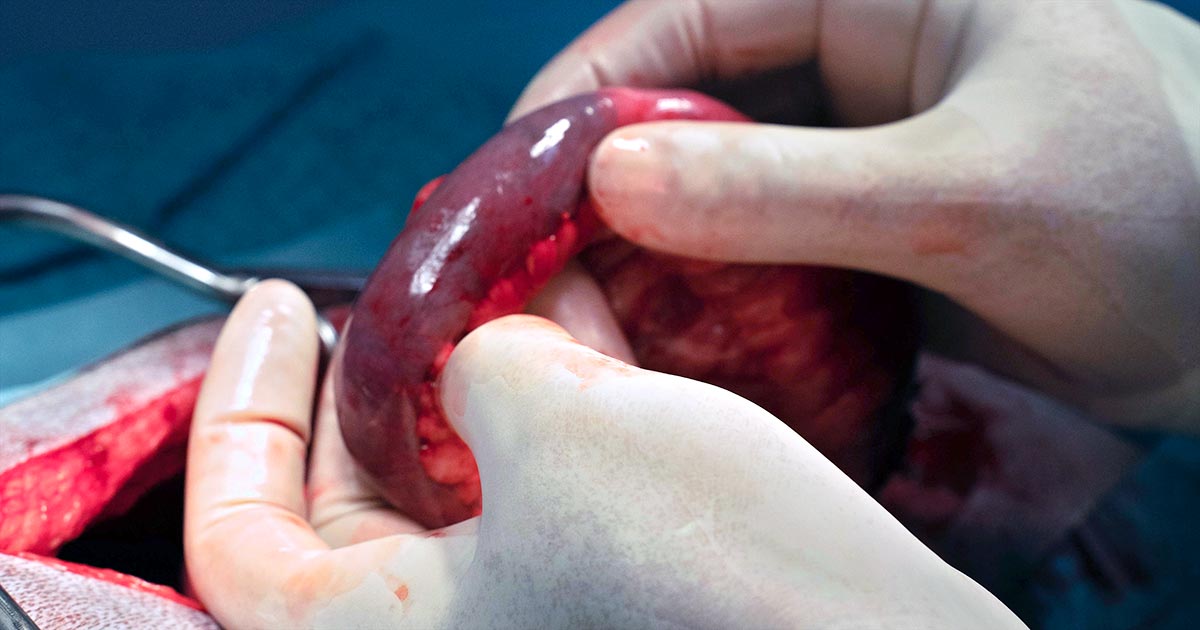To resect or leave in a piece of intestine that is concerning you is a common source of stress when performing exploratory laparotomies.
In many cases, this is straightforward; in some, it can be difficult to decide.
The risk is if you leave in a piece of intestine and it devitalises, then leakage of intestinal contents into the abdomen occurs, leading to septic peritonitis – the situation we all dread.
Criteria
In this post, I cover some criteria I use to assess intestinal viability.
These are all subjective criteria that require familiarity with what is normal, as well as good judgement, to be reliable; however, they are the only realistic criteria available for general use.
Arterial pulsations in the mesenteric arteries that are feeding the affected areas
This is the most important criteria, and it can be the most reliable criterion for assessing intestinal viability.
It goes without saying – if there is no blood supply, there is no oxygen being delivered – resulting in tissue death.
Intestinal tissue color
It is important to remember the colour can change quite dramatically in a short period of time.
Once an obstruction has been removed, perfusion to that area will be restored and the colour can change rapidly. Tissues that are dark in colour can turn dark red then bright red with time.
Often, I give the section of questionable intestine time after I have removed an obstruction to see what colour it changes to. If the tissue is black or grey and does not improve, I would consider resection.
Wall texture
This can be a difficult thing to appreciate, but it can be helpful to compare a healthy segment of intestine to the affected segment of intestine.
When you squeeze and roll a piece of healthy intestine between your thumb and index finger, it should feel thick and springy, whereas intestine that has lost viability can feel “thin”.
Peristalsis
The presence of peristalsis can be helpful and is a good sign. The absence of peristalsis is not an automatic indicator of poor intestinal viability, as it can take some time for motility to return in severe cases.
Partial thickness incision
Finally, a small partial thickness incision can help if you are really stuck.
If there is effective blood supply to the tissues then the blood should be normal and bright red in colour, as it is oxygenated; poor blood supply will mean the blood will remain dark and blue tinged, indicating poor oxygenation.
Concerning signs
The criteria that makes me very concerned – and would make me lean towards resection – include:
- black, grey discoloured intestine
- absent arterial pulsations
- absence of peristalsis
- thin wall thickness
- dark, deoxygenated blood from a partial thickness incision
If I have concerns and it will not result in a significant loss of small intestinal length, I would remove the intestine rather than leave it in.
If you are removing large segments, I would wait longer to see whether time and blood supply will help improve the health of the intestinal tract enough to feel comfortable leaving more of it in.

Leave a Reply